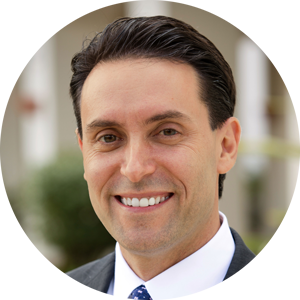My Financial Fitness Secret
This week, I got a call from an old friend I hadn’t talked to in years.
The small talk didn’t last long. He pretty much went right for it.
“So what stocks should I buy?”
Now, I love talking about the market. But when a friend or relative asks me what stocks they should buy, I have a physical reaction. I feel my body pulling away from them. My gaze goes off to the side. I immediately want to put as much distance as possible between me and them.
I can’t tell any individual what stocks they should buy. It depends on their time horizon, their tolerance for risk and what else they have in their portfolio. To give them a few ticker symbols would be irresponsible.
It would be like asking a doctor friend what you should do to feel healthier. He’s not going to tell you to take some magic pill. He’ll tell you to eat right, exercise and get enough rest.
No single stock (or even a few stocks) is going to make your portfolio healthy if it’s not in good shape now. The only way you can take advantage of some excellent short-term stocks is if your portfolio is already healthy.
So for the sake of good health, I’m going to give you the same advice a doctor would – but in this case, it’s for your portfolio.
Eat healthy. You are what you eat, and your portfolio’s health will reflect what you put into it. If you stuff it full of junk, like some penny stocks and cryptocurrencies, it’s going to be volatile and it will probably lose a lot of money. Sure, you may get a sugar rush once in a while if one of those risky bets hits, but in the end, you’re going to crash.
On the other hand, if you fill your portfolio with the good stuff – the financial equivalent of leafy greens, like quality dividend payers, solid growth companies, bonds, and a little bit of gold and real estate – your portfolio will survive a market setback just like a healthy person gets through a cold or the flu.
Exercise. It’s usually not a good idea to start running long distances, climbing mountains or playing full court basketball if you’re not healthy. But if you are healthy, there’s nothing wrong with pushing yourself and flexing some muscles.
The same can be said for your portfolio. Once it’s in good shape, then you can afford to take some gambles on riskier investments, like options and other short-term trades.
Get enough rest. Your portfolio does best when it is resting – when you’re not doing anything. The best thing you can do for your finances, once you’ve invested, is nothing. If you’re invested for the long term, leave your investments alone and let the dividends and growth compound.
Fidelity did a study years ago that showed that the best-performing accounts were the ones where the owner had died or forgotten they owned the account.
Once you set up your portfolio in a healthy way, the only thing you should do is occasionally rebalance if one asset class gets overweighted.
Otherwise, leave it alone. Barely touching your portfolio is one of the best ways to keep your finances healthy.
These steps are easy to take in order to get your portfolio in a healthier position – and they’re a lot easier than eating your veggies.
About Marc Lichtenfeld
Marc Lichtenfeld is the Chief Income Strategist of Investment U’s publisher, The Oxford Club. He has more than three decades of experience in the market and a dedicated following of more than 500,000 investors.
After getting his start on the trading desk at Carlin Equities, he moved over to Avalon Research Group as a senior analyst. Over the years, Marc’s commentary has appeared in The Wall Street Journal, Barron’s and U.S. News & World Report, among other outlets. Prior to joining The Oxford Club, he was a senior columnist at Jim Cramer’s TheStreet. Today, he is a sought-after media guest who has appeared on CNBC, Fox Business and Yahoo Finance.
Marc shares his financial advice via The Oxford Club’s free daily e-letter called Wealthy Retirement and a monthly, income-focused newsletter called The Oxford Income Letter. He also runs four subscription-based trading services: Technical Pattern Profits, Penny Options Trader, Oxford Bond Advantage and Predictive Profits.
His first book, Get Rich with Dividends: A Proven System for Earning Double-Digit Returns, achieved bestseller status shortly after its release in 2012, and the second edition was named the 2018 Book of the Year by the Institute for Financial Literacy. It has been published in four languages. In early 2018, Marc released his second book, You Don’t Have to Drive an Uber in Retirement: How to Maintain Your Lifestyle without Getting a Job or Cutting Corners, which hit No. 1 on Amazon’s bestseller list. It was named the 2019 Book of the Year by the Institute for Financial Literacy.






